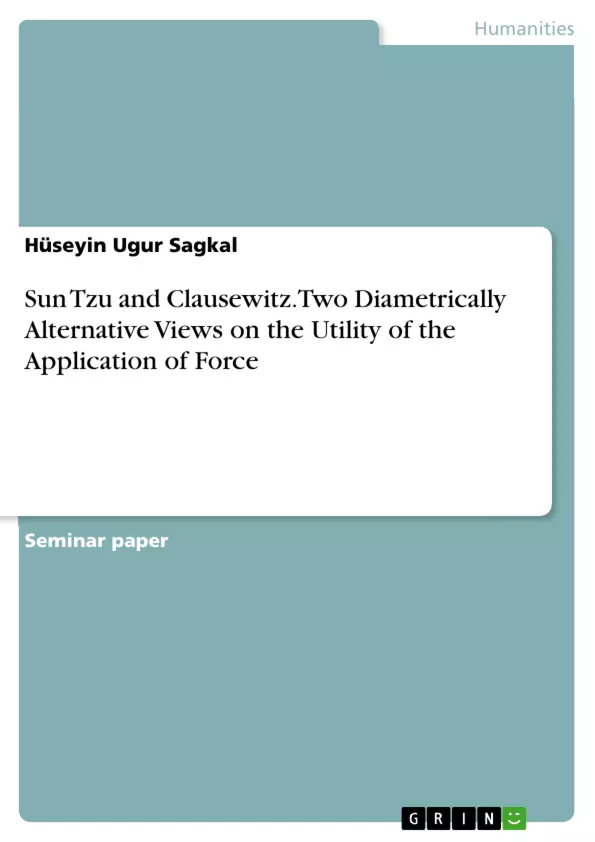Two strategic conceptions have essentially determined the development of contemporary strategies. One of these conceptions is the Prussian general Carl Philip Gottfried von Clausewitz, described in his famous work "On War." His strategic considerations have had a decisive influence on the military treatises and investigations of Engels and Lenin. Their studies, in turn, made possible the development of Soviet strategy of the present day, as formulated primarily by Marshal Sokolovsky and his co-authors in their work "Military Strategy," published in 1962 and revised again and again since then. However, various theses and conclusions in Clausewitz's conception also decisively influenced the strategic considerations of the American neo-Clausewitzians after 1957, such as the game theorist Schelling or the escalation theorist Kahn. The American nuclear strategy of mutually assured destruction "MAD" of McNamara (1967) and the NATO strategy of flexible reply have also been worked out primarily based on the considerations of these theorists.
The other conception is that of the Chinese theorist Sun Tzu, developed in the 5th century and outlined in his work "Art of War." The work has been copied and reprinted again and again throughout Chinese history. Mao Tse-tung based his strategy of guerrilla warfare, recorded in his "Selected Military Writings," on Sun Tzu's theses. Mao Tse-tung's conception has influenced the various strategy of guerrilla warfare after 1945.
The paper at hand will analyze both theories focusing on differences and similarities between the two conceptions in terms of strategic objectives, decision-making processes, strategic means, and mode of deployment.
Inhaltsverzeichnis (Table of Contents)
- Introduction
- Carl Philipp Gottlieb Clauswitz
- Historical Context: Clausewitz
- Clausewitz Theory: "Absolute" and "Real War"
- Sun Tzu
- Historical Context: Stun Tzu
- Sun Tzu's Theory
- Comparison Clausewitz and Sun Tzu
- Conclusion
Zielsetzung und Themenschwerpunkte (Objectives and Key Themes)
This paper analyzes the strategic theories of Carl von Clausewitz and Sun Tzu, focusing on the differences and similarities in their approaches to strategic objectives, decision-making, means, and deployment. It provides a historical context for both theorists, examines their main ideas, and compares their concepts.
- Strategic Objectives and Decision-Making
- Strategic Means and Deployment
- Historical Context of Clausewitz and Sun Tzu
- Comparison of Clausewitz and Sun Tzu's Theories
- Influence of both theories on modern military thought
Zusammenfassung der Kapitel (Chapter Summaries)
- Introduction: This chapter introduces the two major strategic conceptions that have shaped contemporary strategies: Clausewitz's "On War" and Sun Tzu's "Art of War." It highlights the influence of both thinkers on military strategies throughout history, from Soviet and American nuclear strategies to Mao Zedong's guerrilla warfare.
- Carl Philipp Gottlieb Clausewitz: This chapter provides a biographical overview of Clausewitz's life and career, focusing on his military service during the Napoleonic Wars and his involvement in Prussian reform efforts. It highlights the historical context of his writings, including the French Revolution and the changing coalitions of European powers during the Napoleonic Wars.
Schlüsselwörter (Keywords)
This paper focuses on the key concepts of military strategy, strategic objectives, decision-making processes, strategic means, and modes of deployment. It examines the historical context and influence of Carl von Clausewitz and Sun Tzu on military thought, particularly their impact on modern military strategies. Key terms include: Clausewitz, Sun Tzu, "On War," "Art of War," strategic theory, Napoleonic Wars, guerrilla warfare, military strategy, historical context.
- Quote paper
- Hüseyin Ugur Sagkal (Author), 2021, Sun Tzu and Clausewitz. Two Diametrically Alternative Views on the Utility of the Application of Force, Munich, GRIN Verlag, https://www.hausarbeiten.de/document/1157798


